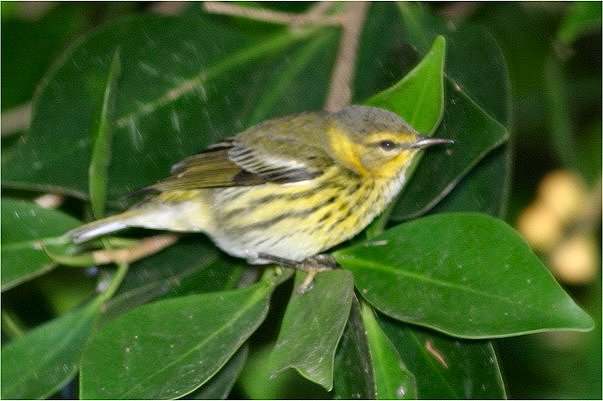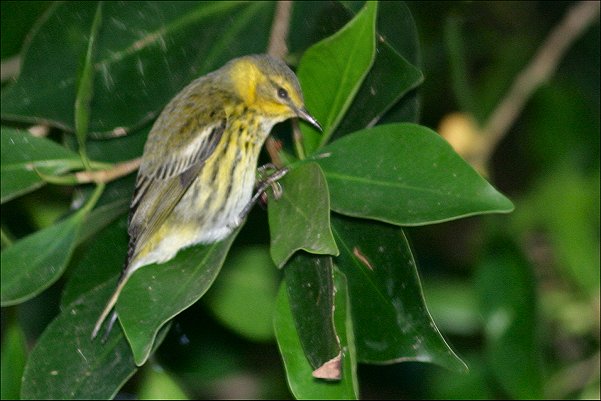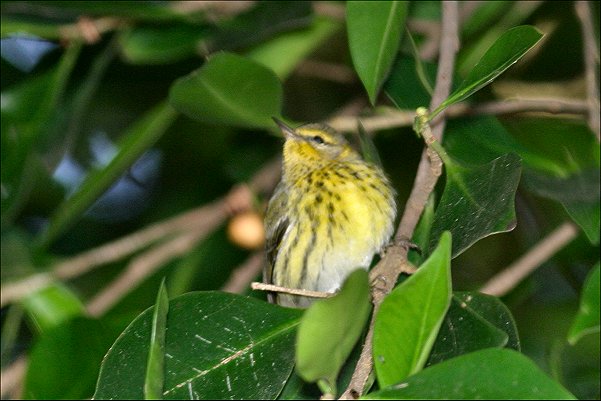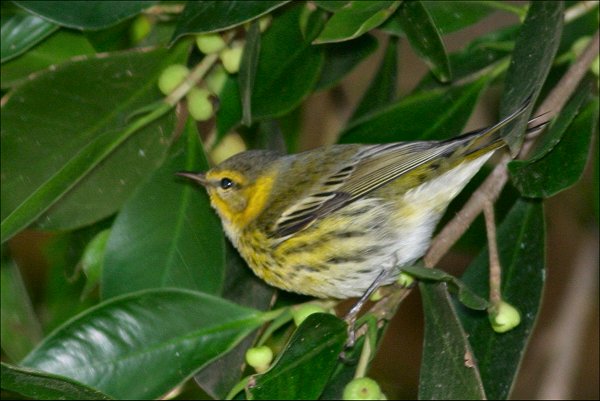Description:

This bird gets it's name from Cape May, New Jersey, where the first specimen was collected
in 1811. It's Latin name, tigrina, reflects the tiger striped appearance of the
adult male. The Cape May Warbler primarily feeds on insects, but also consumes fruits and
berries during the non-breeding season. Robert MacArthur, a pioneer of warbler ecology,
demonstrated that this species (along with a few others) increases its clutch size when
breeding during these outbreaks of the spruce budworm.
Appearence:

General: 4.25-5 inches in length.
Male Alternate: Olive-gray crown, back, and wings. Chestnut cheek patch. Yellow
breast. White belly and undertail coverts. Yellow supercilium and throat, which extends
across face and onto nape. Underside is heavily streaked with black. The back is black
streaked as well. White wing patch. Yellow rump. Black legs. Thin, pointed, black bill.
Male Basic, Female, Immature: Similar to male alternate, except yellow on face and
breast is paler. Black streaking on underside and back is less prominent. Has olive-gray
face patch instead of chestnut.
Habitat:

Open spruce forests. During migration, parks and evergreen or deciduous woodlands.
Nesting:

4 white eggs with brown spots. The eggs have a ? day incubation period. Fledging occurs in
? days. The nest is small, but bulky, and made from twigs and moss, and is lined with
grass, fur, and feathers.
|




